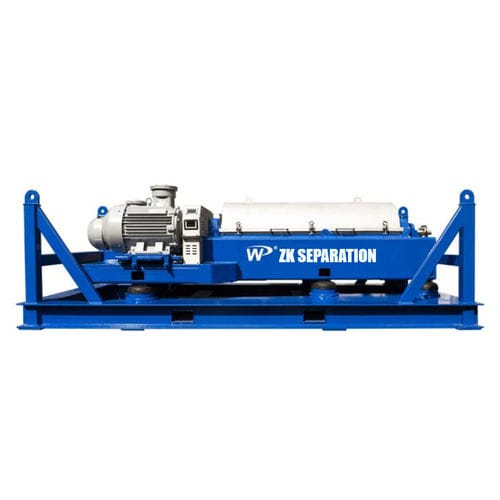
#Industry News
The Top Choice for Treating Oilfield Drilling Mud -- Decanter Centrifuge
What Does Oilfield Drilling Mud Mean?
What Does Oilfield Drilling Mud Mean?
The main sources of oilfield drilling mud come from the oil tanks, sink tanks, sewage tanks, bottom mud of grease traps in pick-up stations and joint stations, oil sands and oil mud removed from oil-bearing water treatment facilities in refineries, light hydrocarbon processing plants and natural gas purification devices, landed crude oil and oil-bearing mud produced by drilling, operations, and pipeline perforation. When oil storage tanks store oil products, a small amount of mechanical impurities, sand, mud, heavy metal salts, and heavy oily components such as paraffin and asphaltene are deposited in the bottom of the tank, forming the Tank bottom sludge.
In 3-6 years of regular tank cleaning, the amount of oil-bearing mud at the bottom of the tank accounts for about 1% of the tank capacity. The characteristics of oil-bearing mud at the bottom of the tank are extremely high hydrocarbon (oil) content. According to the investigation and testing, about 25% of the tank bottom mud is water, 5% of inorganic precipitates such as sediment, and about 70% of hydrocarbons, including 7.8% asphaltene, 6% paraffin, and 4.8% mud ash content.
The oil-bearing mud produced in the process of crude oil extraction mainly comes from the mud produced by the surface treatment system, the oil-bearing mud produced in the process of oil recovery sewage treatment, plus the oil-bearing mud composed of the flocs formed by the water purification agent invested in the sewage purification treatment, the scale from the corrosion of equipment and pipelines, and the dead bacteria. This kind of oil-bearing mud is generally characterized by high oil content, high viscosity, fine particles and difficulty in dewatering, etc. It not only affects the quality of crude oil, but also makes it difficult to meet the standards of water quality and effluent discharge.
The oil-bearing mud in oil refineries and wastewater treatment plants mainly comes from the bottom mud of grease trap, flotation pond flotsam and crude oil tank bottom mud, commonly known as "Three Mud ". The composition of these oil-bearing slurries varies, and the oil content is usually between 10% and 50%, and the water content is between 40% and 90%, accompanied by a certain amount of solids. Domestic oil-bearing mud dewatering treatment basically uses decanter centrifuges.
Why Use Decanter Centrifuges to Treat Oilfield Drilling Mud?
It can be said that there is no second equipment that can be used to treat oil field mud because it is wrapped with oil and the viscosity of oil makes all equipment with filtering media such as filter cloth unusable. The benefits of decanter centrifuges lie in the following.
1. Good adaptability. Taking ZK SEPARATION’s decanter as an example, its design fully takes into account the special characteristics of the drilling mud separation process and implements the optimized design of the main functional components such as specialization and adjustability.
2. Strong production capacity. 24 hours continuous work, large processing capacity and good separation effect.
3. Low labor cost. Fully automatic operation, reliable operation, no manual intervention.
4. Long service life. Under normal operating conditions, the trouble-free operation of horizontal spiral centrifuge will not be less than 8000 hours; and the service life will not be less than 8 years.
5. Compact structure. Small footprint, easy to operate, easy maintenance and low maintenance costs.
6. Safety protection device is complete and reliable. The machine is equipped with torque protection, power control, electrical interlock, sound and light alarm and other multiple protection, which can effectively eliminate or reduce the damage caused by sudden failure of the machine.
7. High degree of automation. The process of feeding, separating and unloading of the decanter is carried out continuously and automatically under full-speed operation.
8. Good operating environment, the separation of suspension by ZK decanter is carried out under completely closed conditions, without any pollution to the operating site, which can keep the production environment neat and hygienic.
9. Corrosion and rust resistance, ZK decanter drum, spiral, shell and other parts in contact with the material are made of stainless steel, with full corrosion and rust resistance. If needed, it can also be changed to other materials according to the user's requirements.
10. Low energy consumption, ZK decanter adopts advanced frequency conversion speed control technology, which has little impact on the power supply network and the energy consumption is 1/3 to 1/2 of similar products.
In conclusion, decanter centrifuges are widely used in the process of oilfield mud reduction. It can be said that the decanter centrifuge is the best choice for treating oilfield drilling mud, and it can hardly be replaced by any other equipment in terms of automation, manual operation, efficiency, etc.





